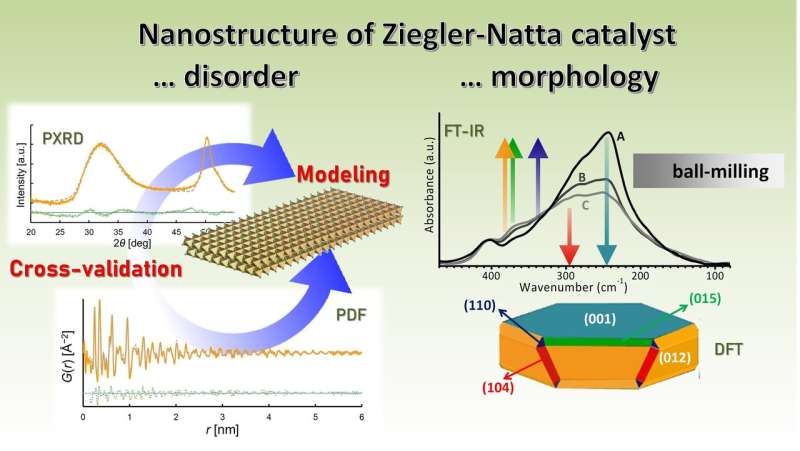Elucidation of nanostructures in practical heterogeneous catalysts

Scientists from Japan Advanced Institute of Science and Technology (JAIST) and University of Torino (UNITO) have cooperatively clarified the nanostructure of the heterogeneous Ziegler-Natta catalyst by means of combined synchrotron X-ray analytical techniques, vibrational spectrocopies, and molecular simulations.
Understanding the structure and the working principle of practical catalysts is largely beneficial for designing catalysts with desired functions. However, this is often infeasible due to the inherent complexity of such catalysts. The Ziegler-Natta catalyst is one of the most sophisticated practical catalysts for its performance in producing desired polyolefins at extremely high yield. Nonetheless, the structure of the nanosized building unit of this catalyst has not been fully understood over six decades.
The collaborative research teams of Japan and Italy quantitatively determined the structural disorder and the dimensions of the building unit based on synchrotron X-ray total scattering analysis aided with molecular simulations. Further, by combining infrared spectroscopies with state-of-the-art DFT simulations, the morphology and the surface exposure of the building unit were clarified. The current research corresponds to the first attempt of adopting synchrotron X-ray total scattering and Far IR spectroscopy for the study of the Ziegler-Natta catalyst. Such the multi-faced approach successfully shed new light on the full elucidation of the nanostructure in practical heterogeneous catalysts.
Papers titled "Revisiting the identity of δ-MgCl2: Part I. Structural disorder studied by synchrotron X-ray total scattering" and "Revisiting the identity of δ-MgCl2: Part II. Morphology and exposed surfaces studied by vibrational spectroscopies and DFT calculation" are both published in the Journal of Catalysis.
More information: Toru Wada et al. Revisiting the identity of δ-MgCl2: Part I. Structural disorder studied by synchrotron X-ray total scattering, Journal of Catalysis (2020). DOI: 10.1016/j.jcat.2020.03.002
Alessandro Piovano et al. Revisiting the identity of δ-MgCl2: Part II. Morphology and exposed surfaces studied by vibrational spectroscopies and DFT calculation, Journal of Catalysis (2020). DOI: 10.1016/j.jcat.2020.04.017
Provided by Japan Advanced Institute of Science and Technology




















